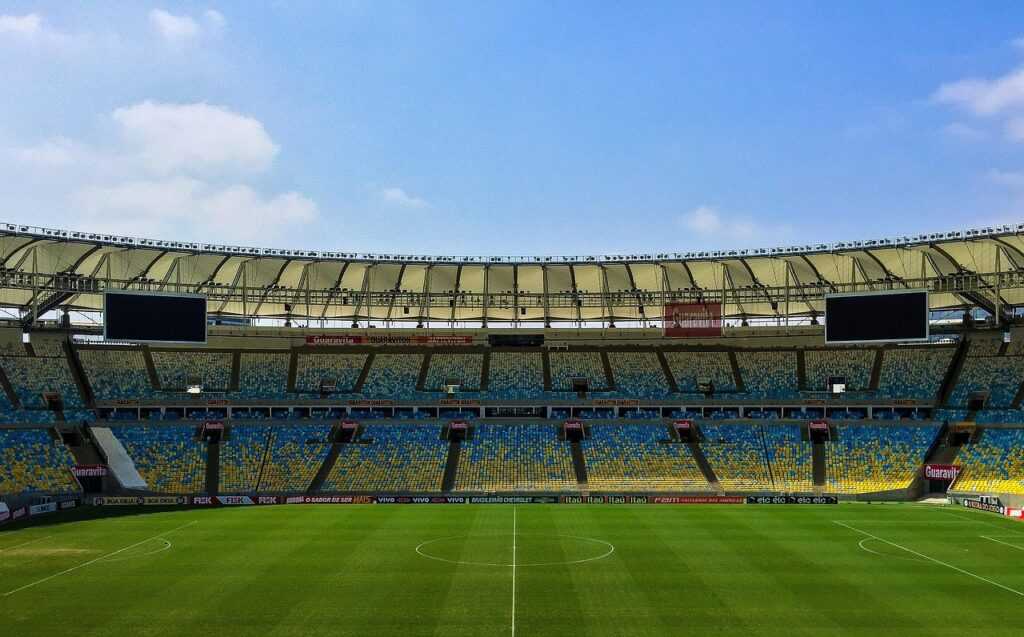Evolution Of Technology In Sports
The integration of technology in sports has transformed practices, training, and competition formats. Initially, tech innovations in sports were limited to basic equipment upgrades and rudimentary timing systems. Over time, the landscape has changed dramatically.
Early Innovations
Stopwatches, electric scoreboards, and simple broadcasting methods were the first significant tech contributions to sports. In the mid-20th century, these advancements improved basic measuring and viewing capabilities, enhancing accuracy in results and expanding audience reach.
Data Analytics
Data analytics now play a critical role. Advanced software analyzes performance metrics, helping teams refine strategies. For instance, Major League Baseball uses Statcast to track player movements, while football teams employ tracking systems for player performance analysis.
| Sport | Technology Used | Purpose |
|---|---|---|
| Baseball | Statcast | Track player movements and ball speed |
| Football (Soccer) | GPS Trackers | Monitor player fitness and positioning |
| Basketball | SportVU | Provide detailed player statistics |
Wearable Technology
Wearables provide real-time data to athletes and coaches. Devices like fitness trackers and heart rate monitors help optimize training and in-game performance. For instance, the NBA utilizes smart-wear technology to monitor players’ physical conditions.
Virtual Reality (VR) and Augmented Reality (AR)
VR and AR offer new dimensions in training and fan engagement. Teams use VR for immersive training simulations, helping athletes visualize plays. Fans enjoy AR for an enhanced viewing experience, accessing stats and interactive content during live games.
Instant Replay and VAR
Instant replay systems and Video Assistant Referee (VAR) technology ensure fair play. Widely used in sports like soccer and tennis, these systems help officials make accurate decisions, reducing human error and increasing fairness.
5G and Internet of Things (IoT)
5G and IoT are set to revolutionize connectivity and data transmission in sports. Faster speeds and lower latency mean real-time data sharing and enhanced communication among teams, officials, and broadcasters.
The evolution of technology in sports has reshaped training, strategy, and competition methodologies. Gradual advancements from basic equipment to sophisticated data analytics and VR/AR now define modern athletic endeavors, enhancing performance and spectator experiences.
Impact On Athlete Performance
Advances in technology are transforming how athletes train and perform in international sports competitions. Here are key areas where technology makes a significant difference:
Wearable Technology

Wearable technology, including smartwatches and fitness trackers, offers athletes a wealth of data on physical metrics. Devices like the WHOOP strap and Fitbit track heart rate, sleep patterns, and recovery times. This data helps athletes optimize their training regimens, monitor fatigue levels, and avoid injuries. Wearable technology also provides coaches with real-time insights, allowing for more personalized training adjustments.
Data Analytics And Performance Tracking
Data analytics leverages vast amounts of information to enhance athlete performance. Performance-tracking tools, such as Catapult and STATsports, collect data on speed, distance, and physiological stress. This information enables detailed analysis of an athlete’s strengths and weaknesses. Teams use these analytics to develop targeted training programs and strategies. By analyzing game footage and player statistics, data analytics helps improve decision-making and game tactics, providing a competitive edge in high-stakes competitions.
Enhancing The Viewing Experience
Advanced technologies are transforming how we watch sports. These innovations make experiencing international competitions more immersive and interactive.
Augmented Reality And Virtual Reality
AR and VR have redefined sports viewing. VR headsets let fans experience games from the field’s perspective, making them feel like they’re part of the action. AR overlays add real-time stats, player bios, and interactive features to broadcasts, enriching the viewing experience without disrupting the game flow.
Live Streaming And Instant Replay
Live streaming has made international sports more accessible. Fans across the globe can now watch events in real time via various platforms. Instant replay technology provides immediate review of critical moments, ensuring viewers don’t miss game-changing actions. This combination of live access and detailed reviews keeps audiences engaged and informed throughout the competition.
Changes In Training And Preparation
Technology’s impact on sports extends deeply into training and preparation, revolutionizing how athletes condition themselves and strategize for competitions.
Advanced Training Equipment
Advanced training equipment has transformed how athletes condition and refine their skills. Smart treadmills, like those integrated with real-time analytics, track metrics such as:
- speed
- heart rate
- stride length
to provide comprehensive feedback. Cryotherapy chambers utilize extreme cold to reduce inflammation and speed up recovery, essential for athletes undergoing intense training. Wearable resistance bands and smart weights adapt to the athlete’s performance level, offering personalized resistance and tracking progress.
Virtual Coaching And Simulation
Virtual coaching and simulation have become vital in modern sports training. Athletes now use VR headsets to simulate game scenarios, allowing them to practice strategic plays in a controlled environment. Expert coaches can remotely guide athletes using live video analysis tools, providing instantaneous feedback and adjustments. Simulation software re-creates competition environments, helping athletes mentally prepare and strategize by visualizing potential game scenarios. This technological integration ensures that athletes receive high-quality coaching regardless of geographical constraints.
Fair Play And Integrity
Technology is pivotal in maintaining fair play and integrity in international sports competitions. Various innovations ensure a level playing field, boosting the credibility of sports events worldwide.
Anti-Doping Technologies
Anti-doping technologies are essential in preserving the integrity of sports. Advanced analytical methods detect banned substances with high precision, ensuring that athletes compete without unfair advantages. Liquid chromatography-mass spectrometry (LC-MS) and gas chromatography-mass spectrometry (GC-MS) are standard in modern anti-doping labs. They enable the identification of even trace amounts of prohibited substances, maintaining strict compliance with anti-doping regulations.
Biological passports are another critical tool. They monitor athletes’ biological markers over time, helping detect abnormalities or fluctuations that could indicate doping. The Athlete Biological Passport (ABP) is one example. It provides a personalized, longitudinal record of an athlete’s biological variables, offering more reliable evidence than a single drug test.
Referee Assistance Systems
Referee assistance systems enhance decision-making accuracy in sports events. Technologies like Video Assistant Referee (VAR) and Hawk-Eye minimize human error by providing real-time video evidence. VAR is widely used in soccer, where it reviews decisions on goals, penalties, and red cards. By analyzing video footage from multiple angles, VAR ensures referees make precise calls.
Hawk-Eye technology is prevalent in tennis and cricket. It tracks the ball’s trajectory and predicts its path, aiding umpires in making correct line calls and verifying disputed decisions. For instance, during a tennis match, Hawk-Eye’s precise tracking resolves line disputes, ensuring fair outcomes.
Integration of these technologies significantly improves fairness in sports, maintaining the integrity of competitions and reinforcing public trust in the outcomes.



